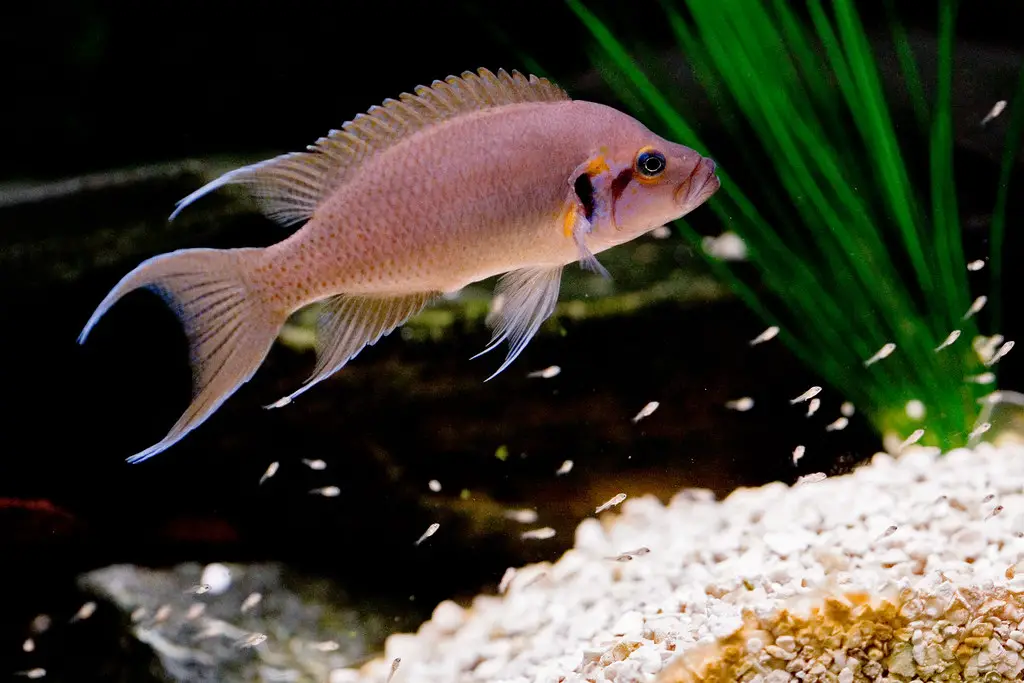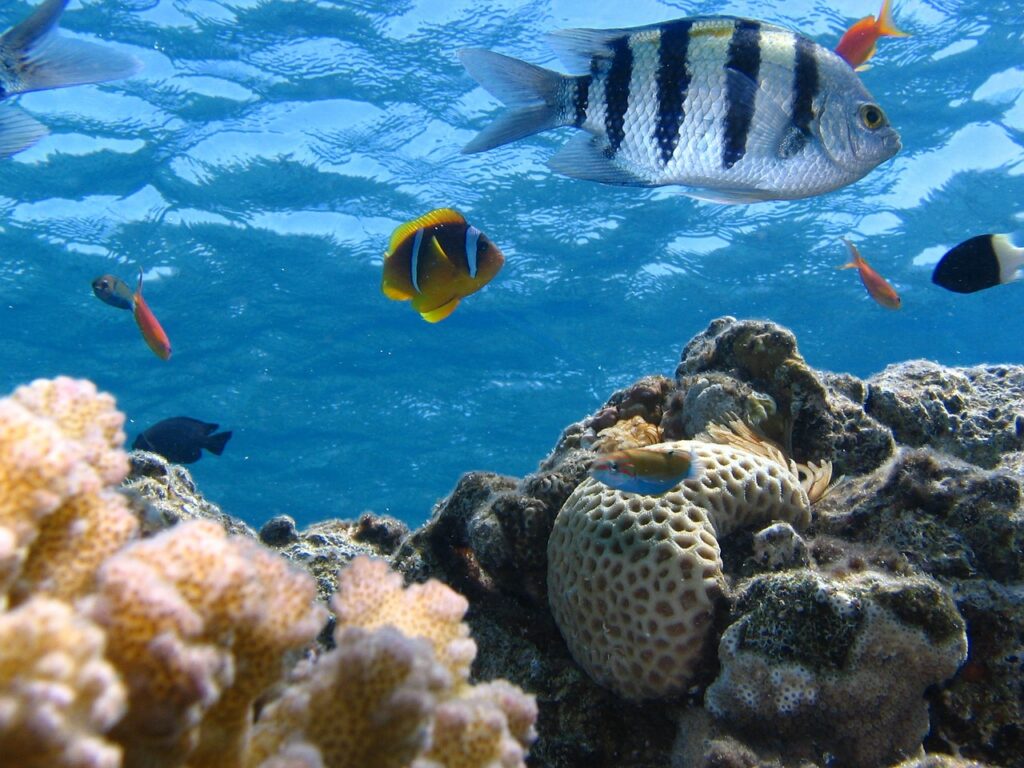Cichlids are a popular freshwater fish kept in many aquariums. They range in many species and colors. Breeding them in your own tank can be a rewarding experience. They can lay hundreds of eggs at a time, but if left in the community tank only a few may survive. To keep the fry safe, you may ask when to separate cichlid fry from parents?
Species of Cichlid may eat their own young when left in the community tank together. This may not be the case with all species or fish of that species. Mature fish have more of a tendency to care for their young. Still, it may be in the best interest to separate the fry from their parents.
Below we learn about cichlids, when to remove the fry, how to care for the fry, and when they can be returned.
Cichlids Breeding Habits
Cichlids are classified into two main groups due to their breeding methods. They are substrate spawners or mouthbrooders.
- Mouthbrooders
Cichlids who reproduce as mouthbrooders have the same mating process as all other cichlids. After the female releases the eggs, either the male or female will gather the eggs in their mouth and release the fry when they are hatched. The eggs may even be fertilized after they are collected in the female’s mouth. Once hatched, the fry is released, and relies on the parents for food and protection.
- Substrate spawners
Substrate spawners can be classified on where they lay their eggs, Some scatter their eggs over a wide area of plants and substrate. Other cichlids prefer to lay theirs over a smooth flat surface. Lastly, some will dig a nest and deposit their eggs in the nest. Wherever they deposit their eggs, cichlids will be very territorial in guarding and protecting their eggs.
When Should I Move Cichlid Fry Out of the Tank?
It will be best to separate the cichlid fry as soon as they are hatched. Cichlids will sometimes eat their own young if left in the tank together. This is not true for all species of cichlids or even all types of fish in a species. Some cichlids have been known to be excellent parents, while others in the same species will not care for their young at all.
First-time parents do the least when caring for their young, and are the most prone to eating their young. More mature cichlids usually take better care of the fry, but it will still vary depending on the species and individual fish. It would still be in the best interest to remove the fry as early as possible.
It is also possible to remove the eggs before they are hatched and incubate them. The eggs may also be removed from the female mouthbrooders for incubation also. Take care to be as gentle as possible because stressed mothers will tend to swallow the eggs.
Can I separate cichlid fry from parents?
If you are concerned about the cichlid eating their young, or they do not begin to care for the newly hatched fish, it will be fine to separate the fry from the parents. Mouthbrooding species may try to care for their young for several days after they are hatched. It may be safe to leave those with their parents.
The fry will require special care once they are hatched. Once separated, they will only require a 10-gallon or smaller tank. For the first week, they do not require feeding and will feed on the remains of their yolk sac. They will not eat any of the food introduced into the tank at this time.
After the first week, the fry will require small water changes to keep their environment safe and healthy. They should be fed multiple times a day with protein-rich foods. They are delicate in this stage and subject to starvation. Ensure they are eating properly and change their diet if necessary to get them the nutrition they will need. They should begin to grow and mature over the next few weeks.
How Long Should Cichlid Fry Be Kept In A Breeder Box?
Cichlid fry should be kept in the breeder box until they grow larger than the adult cichlid mouth. This should only take a few weeks. After that, they can be returned to the main tank if there is no risk of overcrowding or be moved to a grow-out tank. A grow-out tank is 20 to 30 gallons and is equipped with the same heating and lighting as the main tank.
Cichlid fry is susceptible to changing water conditions and temperatures. They must be kept in the proper water conditions to keep them healthy and growing properly. Grow-out tanks should include substrate and decorations for the young fish to hide in. But, they will also require large areas to swim in so tank decorations should be kept to a minimum.
The cichlid fry should continue to experience quick growth if fed properly and kept in the correct conditions.
Will Cichlid Fry Survive in a Community Tank?
Until the fry has grown and matured to be larger than a fish’s mouth, they have the risk of being consumed in a tank with other fish. They should be kept in a breeder box or grow-out tank. Once they are larger they can be returned to the community tank without the risk of being eaten, as long as overcrowding will not be an issue in the larger tank.
Conclusion
Breeding cichlids can be a rewarding but challenging experience. Due to the nature of some adult cichlids, it may be necessary to remove the fry until they can mature and be returned to the community tank. The fry is vulnerable when they are young and need stable water conditions and frequent water changes until they are able to grow and mature.
After a few weeks when they are larger than a mature cichlid’s mouth, they can be returned to a community tank or moved to a grow-out tank if there will be no issues with overcrowding in the community tank.



